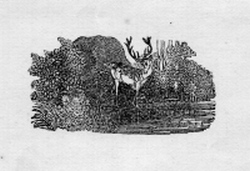Philippa Davenport’s Venison Pie
This traditional game pie with forcemeat balls is just superb. The old-fashioned cohabitation of subtly sweet and savory elements is characteristic of pre-Victorian English foodways. Our recipe is adapted from 100 Great Dishes Made Easy (London 1984), which looks like a coffee table book with its outsized format and full page photographs, but is in fact a practical and enjoyable cooking manual. It is in no way limited to, or even skewed toward, British recipes. Four servings.
 For the filling and piecrust:
For the filling and piecrust:
- 12 pitted prunes
- about ½ cup tawny port
- about 1 ½ lb venison, cut into 1 ½” cubes
- 1 Tablespoon unsalted butter
- 1 ½ teaspoons corn or other neutral oil
- 1 ½ cups chopped onion
- 8 oz mushrooms, quartered (or, if large, cut into sixths or even eighths)
- 3 Tablespoons flour
- 1 cup beef stock (or canned consommé)
- juice of ½ lemon
- hot sauce and Worcestershire
- puff pastry
For the forcemeat balls:
- 2 oz canned or jarred anchovies, rinsed, patted dry and finely chopped
- 2 Tablespoons shredded suet
- 2 Tablespoons Irish bacon, minced (or similar amount minced Canadian bacon)
- 1 cup breadcrumbs
- 3 Tablespoons chopped curly parsley
- grated peel of a lemon
- 1 beaten egg
- black pepper
The filling
1. Marinate the prunes in the port overnight, drain and reserve each separately.
2. Ruthlessly trim the venison of any yellowish fat and cut it into 1 ½ inch cubes.
3. Heat the butter and oil together over medium-high heat and sear the meat until browned. Do not crowd the meat or it will steam instead of fry, and dry out instead of brown.
4. Stir the flour into the fat in the pot, then add the port, stock and lemon juice along with splashes of hot sauce and Worcestershire.
5. Bring the sauce to a boil, add the meat and onions to the pot, season with salt and pepper, reduce the heat to very low, cover and simmer for about an hour, or just until the meat is barely tender.
The forcemeat balls
6. Combine all the ingredients, divide the dough into 12 pieces and roll them into little balls: refrigerate the forcemeat balls while the meat simmers.
The pie
7. Spoon the venison mixture into a pie dish that holds about 6 cups, and place a pie bird (if you have one; otherwise use a small cup, upside down) in the center to support your piecrust; let the filling cool.
8. Preheat the oven to 400° and put a cookie sheet on a rack in the middle of the oven.
9. Check the venison mix for seasonings, then push the mushrooms, prunes and forcemeat balls evenly throughout.
10. Prepare the pastry lid: Cut out a top that will overlap the pie dish by about 1 ½ inches; then cut off a 1” wide ring from the outside of the top.
11. Press the pastry ring down onto the rim of the pie dish, dampen it, and place the pastry top over the dish. Press down on the edge of the top with your thumb to create a uniform rim of scallop-shaped pastry around the circumference of the pie and cut away any extra dough: Save the scraps to decorate the top of the pie.
12. Glaze the pastry with some egg, decorate the top with the pastry scraps, reglaze the top and cut vents in the pastry.
13. Put the pie on the cookie sheet in the oven and cook for 20 minutes.
14. Reduce the oven temperature to 325°, cover the crust loosely with foil so that it does not burn, and bake for about another half hour.
15. Let the pie stand for a few minutes and serve.
Notes:
- Please try this dish. It is not as complicated as the list of ingredients or number of steps may infer, and the use of puff pastry and fact that the pie only has a top crust remove any mystery or anxiety from the baking process. Try not to be deterred by what apparently is a strange juxtaposition of ingredients (like prunes and anchovies) that individually as well as in combination often are exiled from the American kitchen. The use of distinct flavors and textures within the filling is prototypically English and, incidentally, alien to the traditional French practice of merging sauced ingredients to create a new, homogeneous taste.
- This, along with the less ancient steak, kidney and oyster, may be the best of all hot savory pies (although cold raised pork pies have a claim to general pie parity).
- A light salad of lettuce or, better, watercress to provide some complimentary contrast is all you need to serve with the pie; smoked salmon, potted shrimp or another shellfish dish to start.
- If you cannot get venison, use beef chuck. It is not the same but will give you some idea of a Georgian culinary palette that deserves revival.
- You can substitute American bacon for the Irish or Canadian bacon in the forcemeat balls. Some people prefer the smokey flavor.
- Some people prefer the sweeter ruby to tawny Port, but we like the drier and tannic tawny. You will get plenty of fruit from the prunes.
- It is a mystery to the Editor that the recipes from Philippa Davenport’s Financial Times columns have not been published together as a cookbook. Many of them introduce innovative elements to traditional British techniques to create a distinctive personal style, much the way that Susan Spicer and the more recent writings of Paul Prudhomme have extended the culinary canon of Louisiana.

